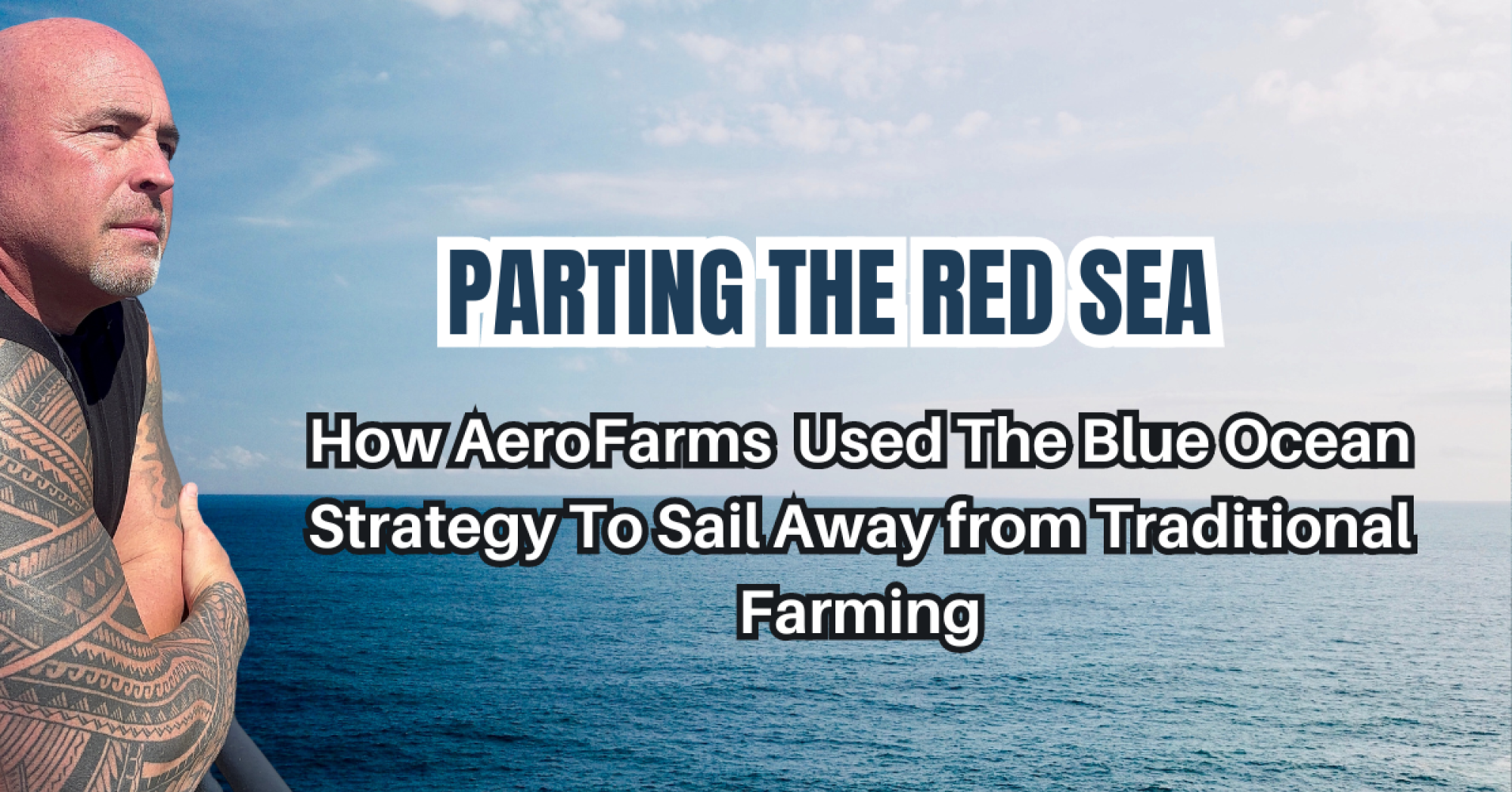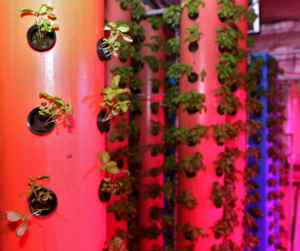
Parting The Red Sea: How AeroFarms Used The Blue Ocean Strategy To Sail Away from Traditional Farming
“There’s magic in the water that draws all men away from the land, that leads them over hills, down creeks and streams and rivers to the sea.” —Herman Melville
What happens if you start viewing success not as a battlefield but as a vast, unexplored ocean?
That’s the core idea behind Blue Ocean Strategy, a framework that helps businesses discover uncontested market space and create new waves of growth.
Red Oceans vs. Blue Oceans: It’s All About the Water
The traditional business landscape is like a crowded, battle-bloodied red ocean. Companies fight for the same customers with similar products, driving down prices and innovation.
It takes a certain mindset but there are still great victories to be won here.
Blue oceans, on the other hand, are unexplored waters.
Here, businesses create new demand by offering something entirely different. There’s less competition, more room to maneuver, and the potential for high profitability.
AeroFarms: Vertical Farming In a Blue Ocean
In 2011, a revolutionary new type of farm took root in Newark, New Jersey that many hailed as the future of agriculture – the AeroFarms indoor vertical farm. This 70,000 square foot facility was the brainchild of Cornell University professors Ed Harwood and Dickson Despommier along with entrepreneurs David Rosenberg and Marc Oshima.
What made AeroFarms so groundbreaking was its implementation of vertical farming using aeroponic technology on a large commercial scale. Instead of rows of crops spread across acres of land, AeroFarms grew layers of greens like arugula, watercress and bok choy stacked vertically in a controlled environment indoors.
The entire operation is highly automated and optimized through computer control of environmental variables like temperature, humidity, light intensity and nutrients. This allows for year-round production of produce with superior quality, food safety and flavor profiles compared to traditional farming.
A key innovation is the proprietary “air-misting” system developed by Harwood, which used specialized grow media made from recycled plastic bottles to deliver nutrients directly to the plants’ roots. This aeroponic method uses only 5% of the water required for conventional farming.
The compact, urbanized footprint of AeroFarms enabled truly localized farming that reduced transportation miles and carbon emissions. With up to 390 times greater productivity per square foot, vertical farming represented a potential solution to feed growing urban populations sustainably.
While earlier vertical farm concepts existed, AeroFarms demonstrated that the technology was viable at commercial scale. Its success sparked a wave of investment into vertical farming startups aiming to construct similar facilities around the world.
On the planet of farming, AeroFarms had found a blue ocean.

So, How Do You Navigate Your Way to a Blue Ocean?
Blue Ocean Strategy isn’t about a quick fix. It’s a way to fundamentally rethink your approach to competition.
Here are some key principles:
- Value Innovation: No more “me too” products. Blue Ocean Strategy focuses on creating new value for customers. This could be through a combination of affordability, convenience, or features not offered by existing competitors.
- Break the Value-Cost Trade-Off: Typically, businesses see a trade-off between offering high value and keeping costs low. Blue Ocean Strategy challenges this. By eliminating unnecessary features and focusing on what truly matters to customers, you can create a high-value, low-cost product that disrupts the market.
- Go Beyond Existing Customers: Look outside your current market. Blue Ocean Strategy encourages identifying entirely new customer segments. This could involve targeting a different demographic or simplifying a complex offering for a wider audience.
How AeroFarms Cultivated an Untapped Blue Ocean
AeroFarms implemented a blue ocean strategy by creating a new commercial vertical farming market space that made competitors largely irrelevant.
Here’s how they did it:
Valuing Innovation
Rather than competing head-to-head with traditional outdoor farms, AeroFarms created a completely new value proposition – an indoor vertically stacked aeroponic growing system. This innovative model offered advantages that went beyond the old trade-offs with:
- Year-round production unaffected by weather
- Compact urban footprint reducing transportation
- Optimized controlled environment for quality
- Water savings of 95%
- Localized food supply reducing spoilage
Focusing on the Big Picture
AeroFarms didn’t get bogged down in improving existing farming methods. They looked at the big picture of sustainable urban food production and created something novel.
Crossing Boundaries
Their vertical farming concept converged across industries like agriculture, environmental science, engineering, computer science and more to remake the supply chain.
Pursuing Low Cost
By leveraging technology like LED lighting, automation and monitoring systems, AeroFarms was able to keep operating costs very lean compared to land/labor needs of outdoor farms. This allowed them to price competitively while maintaining higher margins.
Executional Risk, Not Planning Risk
Co-founder Ed Harwood spent decades researching aeroponics, mitigating technology risk. However, building the massive indoor facility presented huge execution challenges that were strategically managed.
In retrospect, AeroFarms’ vision of sustainable vertical farming in cities eliminated the tradeoffs plaguing the agriculture industry. This unlocked a new commercial blue ocean opportunity.
Charting a Course to Sustainable Success
The story of AeroFarms perfectly illustrates the power of Blue Ocean Strategy. By venturing beyond the red ocean of traditional agriculture, they created a new market space with immense potential. Their focus on value innovation, eliminating unnecessary costs, and targeting a new customer segment (urban populations) paved the way for a sustainable and profitable future.
So, if you feel stuck in a competitive rut, consider setting sail for the blue ocean.
By applying the principles of Blue Ocean Strategy – value innovation, cost optimization, and exploring new market frontiers – you too can discover uncontested waters and navigate your business towards a future of sustainable success.
The vast blue ocean waits for those bold enough to explore it.